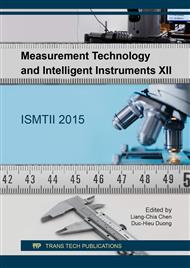p.185
p.191
p.197
p.203
p.209
p.215
p.223
p.231
p.237
Problems of Signal Processing in Ultrasonic Gas Flow Measurement
Abstract:
Vortex measuring methods with ultrasound are distinguished by small bluff bodies, low pressure losses and high sensitivity. The ultrasound wave is modulated by the vortices behind the bluff body. The modulation frequency represents the flow velocity and can be determined by well-known demodulation procedures.Cross correlation methods use the natural turbulences in a fluid. Because of the skewed density function of the velocity components the maximum of the cross correlation function does not represent the transit time of the turbulences between two ultrasonic barriers. Processing of the complex modulated signal is very difficult because the phase of the signal can reach very high values and can not be considered unambiguously. It is advantageous to simplify the signal processing by artificially generated vortices by a small bluff body. It results in a symmetric density distribution and symmetric cross correlation function. Furthermore, it results in a self-monitoring system. Alternatively, two different carrier frequencies can be applied to the two ultrasonic waves. In the cross correlation function the carrier frequencies are eliminated automatically.
Info:
Periodical:
Pages:
209-214
Citation:
Online since:
September 2017
Authors:
Price:
Сopyright:
© 2017 Trans Tech Publications Ltd. All Rights Reserved
Share:
Citation:


